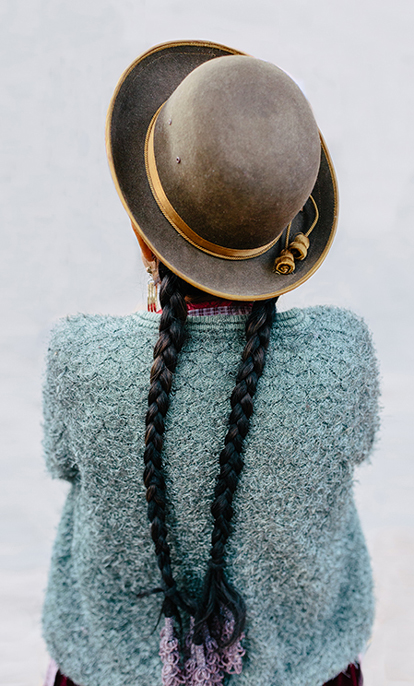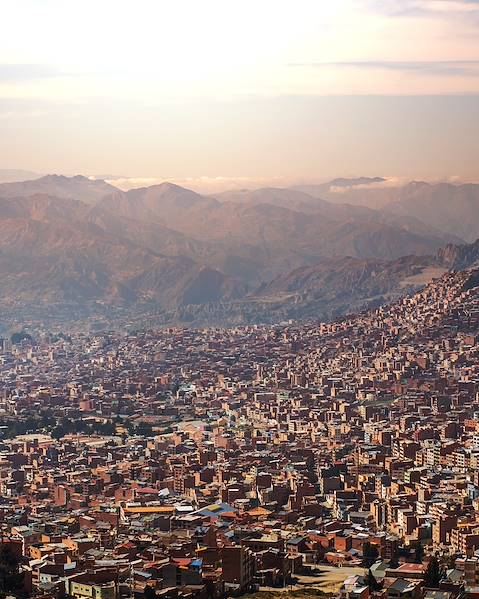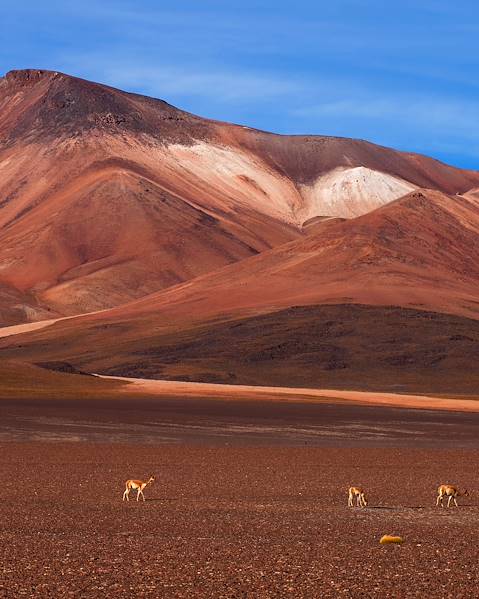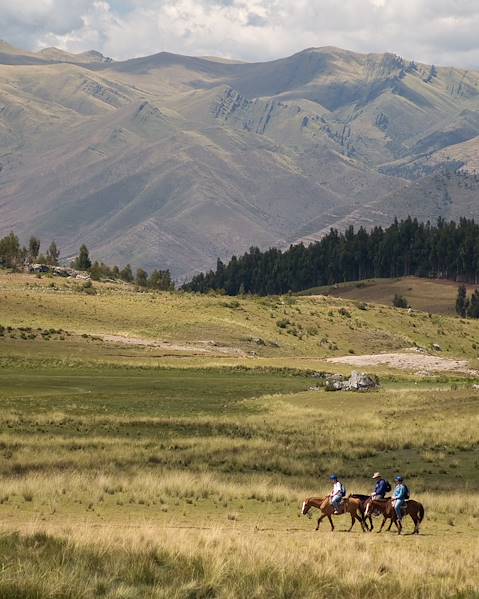Bolivia may not be as popular as its South America counterparts, yet this under-the-radar destination is home to an array of striking landscapes, incredible cultural diversity and adrenaline-inducing adventure activities. If you’re tempted to explore this intriguing nation, read on for our guide of things to know before travelling to Bolivia…
Climate & Weather in Bolivia
There are two distinct seasons in Bolivia (summer and winter), however the country’s climate can vary greatly depending on region and altitude. Summer runs from November to March, with hot weather but also heavy rainfall, especially in the lowlands. The winter season (April to October) is generally dry with sunny skies, making it a good time for adventure activities. However, temperatures can drop sharply during the winter, particularly in the Altiplano. At higher altitudes (including the capital, La Paz), temperatures are cooler and packing layers is advised when travelling to Bolivia. The shoulder season (October and November) is considered the best time to visit the Salar de Uyuni (the world’s largest salt flat), as rainfall is at a minimum and the weather is warm.
Currency in Bolivia
The currency of Bolivia is the Bolivian Boliviano (BOB) and is divided into 100 cents (centavos in Spanish). It’s advisable to exchange some cash before travelling to ensure you get the best rates, and while ATMs are common in cities and larger towns, they can be harder to find in rural regions so carrying some cash is a good idea. Most shops and restaurants in the main cities will accept credit cards and bringing an international card (with no transaction fee) is recommended. Don’t accept torn Boliviano notes as change, as they can be refused in some places (even though they are technically still legal currency). Be mindful of where you store your money and be careful about keeping it safe. While tipping isn’t compulsory, it is appreciated, and a tip of 7-10% is sometimes added to restaurant bills. Taxi drivers don’t expect tips unless you hire them for the whole day, in which case 10% is considered appropriate.
Food in Bolivia
As with most food in South America, meat, potatoes, rice and beans form the basis of Bolivian cuisine. Some staple dishes include anticuchos (meat skewers with potatoes and spicy peanut sauce), cuñapé (bread made from cassava flour and baked cheese) and silpancho (meat pastry, served with eggs, potatoes, rice and salad). There are also regional variations in food, with certain ingredients characteristic of each area. For example, soups are a staple in the Altiplano and one of the most widely available is chairo, a thick meat and potato soup. Quinoa is another frequent soup addition and mutton is the most common meat in this area. In the valley regions, pique a lo macho (chopped beef, sausage, potatoes, onions, tomatoes and chillies) is a popular dish, while plantain and yucca generally replace potatoes within most dishes found in the tropical lowlands. Salteñas (savoury pastries filled with meat in a spicy sauce containing olives, raisins and potatoes), tucumanas (similar but deep-fried) and empanadas are prevalent street food offerings, with markets and stalls found throughout the country.
Drinks in Bolivia
In terms of drinks, refrescos (fizzy drinks) are found all over the country and the variety of tropical fruits is made into jugos (juices), available from market stalls. Té (tea) and café (coffee) are widely available and herbal teas, known as mates are a popular choice. The most common alcoholic drink is cerveza (beer), with Paceña and Huari as the most popular brands. Most breweries also produce a dark beer known as malta, similar to stout. Vinos (wine) is not consumed as widely as beer, but the country produces a good selection. Singani (white grape brandy), produced in the Tarija valley, is the most commonly found spirit in Bolivia. Although the tap water in some cities is chlorinated, it's safest to avoid drinking it entirely while in Bolivia. Bottled water is sold throughout the country and it is advisable to check the seals are intact when purchasing, as sometimes they are refilled. Bringing a filtered water bottle is a good idea, to avoid plastic bottle waste.
Transport in Bolivia
The easiest and most common form of transportation in Bolivia for both travellers and locals is by bus. There are local buses called Micros and Trufis that travel on specific routes through cities and to smaller towns. For longer distances, you can take public buses (such as Bolivia Hop, El Dorado, Trans Empreador or El Bolivar), which often travel overnight. Taxis are another easy and safe way to get around cities, although be sure to use registered companies and avoid unlicensed street taxis. It’s a good idea to ask your hotel what you should be charged and confirm the price before getting in the taxi. Radio Taxis are the safest option as they are operated by a legal taxi company, while Uber also operates in some bigger cities. Flying is the most expensive transport option, but can be preferable for travelling between cities to save time and is sometimes safest if visiting places with hazardous road conditions (such as the jungle).
Language in Bolivia
The official language of Bolivia is Spanish – which is spoken by around 84% of the population – although there are 39 other indigenous languages spoken in different regions, such as Quechua (spoken by 28%), Aymara (spoken by 18%) and Guaraní (spoken by 1%). While English is quite widely used in touristy areas, such as Sucre and Uyuni, it’s worth learning some Spanish words and phrases to help you get around and communicate with locals.
Etiquette in Bolivia
Bolivian culture is fairly formal and when greeting someone, it’s customary to shake their hand and maintain direct eye contact (to show you’re a trustworthy person). Use the most appropriate greeting for the time of day (buenos días for the morning, buenos tardes in the afternoon, or buenos noches at night) and when addressing people, use señor or señora (Mr or Mrs). Stick to the formal usted ('you') for people you don't know well, rather than the informal tú. In remote villages (particularly in the highlands), attitudes towards appropriate clothing are more conservative and it’s polite to cover up more. Always ask permission before taking a photo of someone, as many people from Bolivia's smaller communities prefer not to be photographed. Don’t take coca leaves or products out of the country, as although the plant is legal in Bolivia (the coca plant is sacred to people living in the Andes), it is illegal elsewhere and customs authorities take this very seriously.
Health & Safety in Bolivia
Malaria is present in lowland areas of Bolivia, most notably in the Amazon region, so taking antimalarials is advised. It’s also important to be aware of how high altitudes can affect you and altitude sickness can be a serious problem in western Bolivia. Taking time to acclimatise properly, pausing for rest days (especially when hiking), eating light meals and avoiding alcohol can help prevent altitude sickness.
As in any foreign country, use common sense; don’t wander the streets after dark or head to unknown neighbourhoods without researching their safety first, and don’t flaunt any expensive possessions or jewellery. Unfortunately, petty crime is common in La Paz and other popular tourist destinations, including on buses and in crowded areas, so be sure to have travel insurance for your belongings, remain attentive to your possessions in busy cities and avoid using your mobile phone in the street. Always keep your passport, air ticket and other valuable items in a safe place. Criminals sometimes impersonate police officers as a means of scamming foreigners and getting money, so be cautious of people approaching you in the street or trying to distract you. Don’t resist if you are robbed and head to the nearest police station to report the crime.
Adventure activities are prevalent in Bolivia, however there are no official minimum standards for tour operators, so be sure to only use reputable companies and have comprehensive travel insurance. Mountain biking along ‘Death Road’ is a popular tourist activity; make sure bicycles are in good condition and guides are equipped with safety equipment and first-aid kits before departing.
Must-sees in Bolivia
Bolivia is brimming with adventure activities and breath-taking landscapes. Here are a few ‘must-sees’ to get you started:
- Explore Salar de Uyuni (the salt flats) – the reflective nature of the world’s largest salt flat makes for some excellent photo opportunities and the dry season is the best time to visit.
- Visit Lake Titicaca – situated on the border between Bolivia and Peru, Lake Titicaca is home to ancient Inca settlements and underwater ruins.
- Discover the Amazon – one for wildlife lovers, the Amazon basin extends into Bolivia's northern region and boasts an incredibly rich eco-system.
- Head to Laguna Colorada – the most striking thing about the lake is its dark red water and you’ll also find the world’s largest population of rare James's flamingos here.
- Trekking in the Andes – the mountain range is accessible for both novice and beginner hikers and Huayna Potosí is one of the most popular ascents.
- Shop in La Paz’s Witch Market – hidden within the backstreets of La Paz, the Witches' Market contains a whole host of weird and wacky souvenirs.
Things to Bring to Bolivia
The weather in Bolivia can be unpredictable and varies greatly between each region, so it’s worth packing warm thermal layers, a fleece and rain jacket for colder areas, as well as sunglasses, a sunhat and suncream to avoid getting sunburnt in warmer regions. Bringing insect repellent is advised to avoid being bitten and it’s a good idea to bring enough with you, as these products can be expensive to purchase once there. Good walking shoes are essential for exploring both the cities and mountainous areas.
















